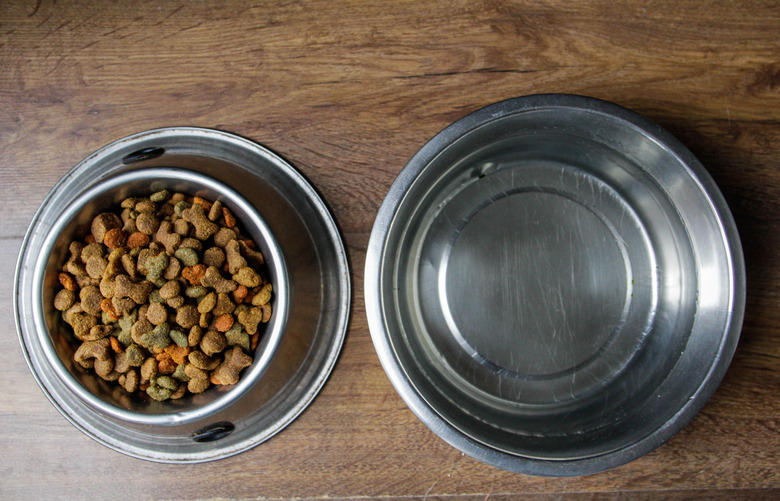How To Sanitize Stainless Steel Dog Bowls
Stainless steel is the material of choice for pet parents who want to keep their dogs safer by reducing bacteria in their food and water bowls. In fact, stainless steel is the recommended (and often required) material for food-handling surfaces in restaurants as mandated by health departments.
Cleaning stainless steel dog bowls isn't a big issue, but you'll want to get it right to extend the life of the bowl and keep your pet healthy. Reviewing how to disinfect stainless steel food and water bowls will help make this task easy and safe.
Why stainless steel dog bowls?
Why stainless steel dog bowls?
The reason health professionals recommend stainless steel for preparing and serving foods and drinks is because it's impermeable to bacteria and other harmful substances. When you use materials like plastic or even ceramic, they can chip, breaking the impermeable surface and allowing bacteria to possibly live in that area. In addition, stainless steel does not allow any chemicals to leach into a dog's food or water like plastic bowls can.
How often should you clean it?
How often should you clean it?
Would you eat a meal, leave the dirty plate or bowl sitting on your floor overnight, and then use it again to serve yourself, your family, or your friends? Many pet professionals and organizations recommend cleaning food and water bowls daily and sanitizing them at least once each week. You can clean a dog bowl daily with a simple hot water rinse and a good scrub or wipe if food isn't caked on it.
About water fountain bowls
About water fountain bowls
The ultimate choice in water bowls for many pet parents, vets, pet sitters, and groomers is a stainless steel bowl with a fountain. This keeps the water circulating and prevents dust and other airborne materials from settling on the surface of the water.
The gentle, gurgling sound is also similar to a stream or other natural water source and reminds pets that they have fresh water. This encourages them to drink more often and helps them stay properly hydrated, ensuring health and a better coat (or fur in the case of cats).
Disinfecting pet bowls
Disinfecting pet bowls
- Choose the right cleaning agent and cleaning tool. Keep two things in mind when thinking about how to clean stainless steel bowls: the
cleaning agent and the cleaning tool. This means you'll want to pick the right disinfectant
and the right cleaning pad or sponge. Don't use an abrasive cleaning scrubber
material that will scratch the stainless steel surface. Over time, repeatedly scratching
a stainless steel bowl can cause defects that release metal into the dog's
water or food. - Try vinegar. You can choose an organic or commercial cleanser as long as
it's recommended as food-grade safe and you completely rinse it off. You can
soak a dog bowl in a weak solution of water and vinegar or bleach and then
rinse the bowl completely. Your dog will get sick if he ingests too much vinegar
or bleach. Aim for a solution of 1 tablespoon of bleach or vinegar to 1 gallon
of water to stay on the safe side. - Try baking soda. You can try a solution of equal parts water, salt, and baking
soda instead. If you have dish soap, you can try that as long as you
thoroughly rinse off all the soap at the end. Let the bowl soak for 10 minutes or
more before rinsing and drying. This all depends on how much caked-on food there is. You
might try a hot-water-only soak before you begin disinfecting to help loosen
any hard food. - Check the smell. Smell the bowl before you put it back on the floor. If it smells like cleaner, your dog might reject the food or water. You can clean and
disinfect your dog's bowls in your dishwasher during your regular dishwashing
cycles. They'll all be cleaned and should have no traces of soap or sanitizer.
